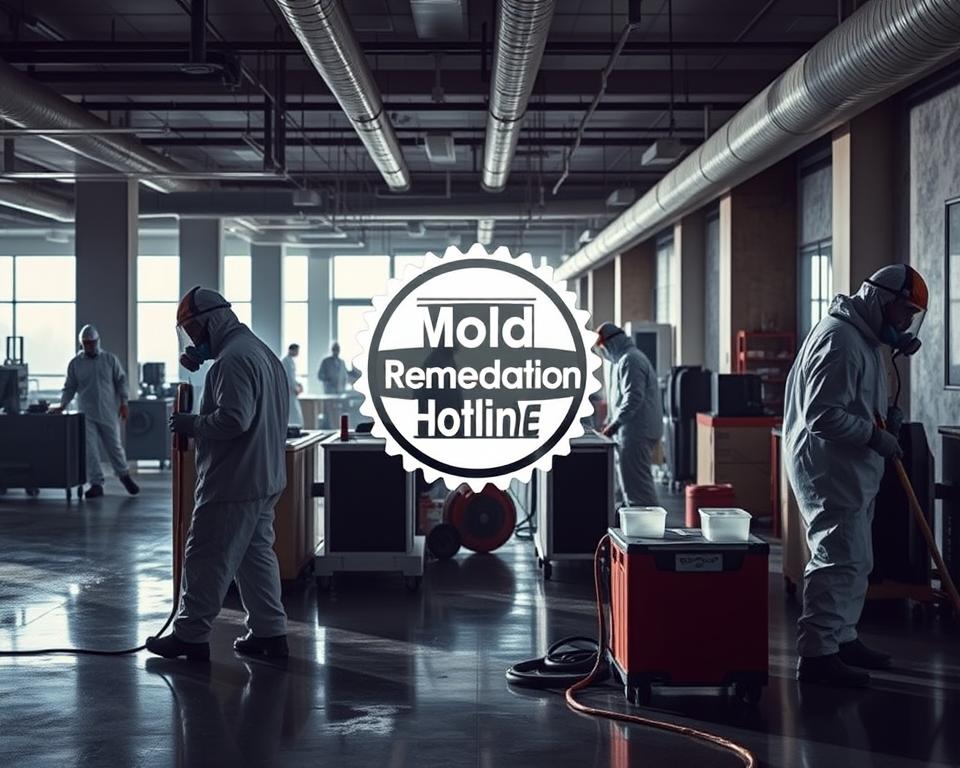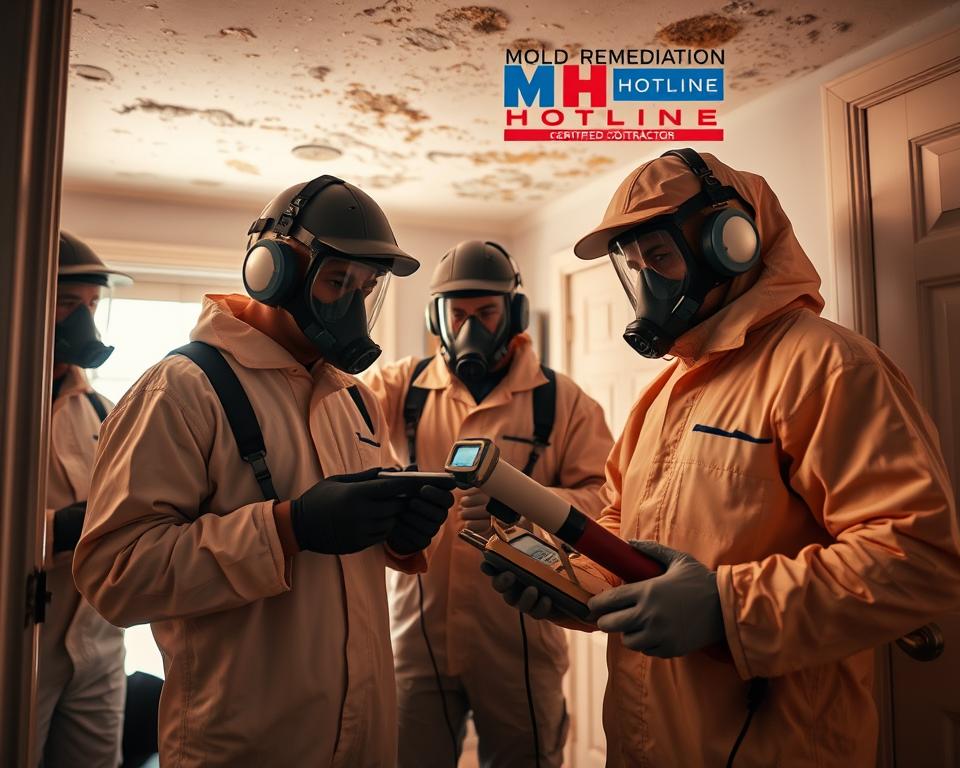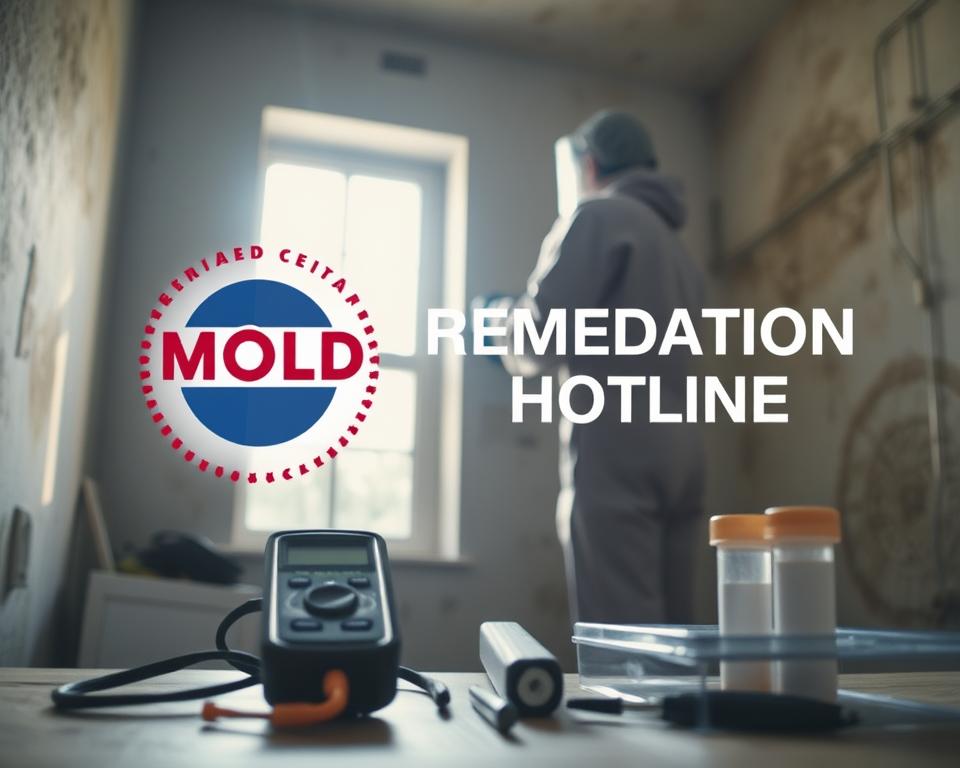Did you know that professionals tackling dangerous fungal growths in your living spaces aren’t legally required to have formal qualifications? This startling reality leaves many homeowners vulnerable to improper treatments that can worsen air quality or spread contamination. The stakes are high—what you can’t see in your walls or ventilation could impact your family’s health for years.
Not all fungal issues are created equal. Some varieties require specific containment protocols, while others demand advanced removal techniques. Without proper training, workers might use the wrong cleaning solutions or miss hidden colonies, leading to recurring problems.
Choosing the right specialist involves more than comparing prices. Qualified professionals bring tested strategies for identifying moisture sources and preventing regrowth. They follow strict safety guidelines during cleanup, protecting both your property and those handling the job.
Key Takeaways
- Formal credentials indicate specialized training in fungal identification and removal techniques
- Complex infestations often require advanced tools beyond basic cleaning supplies
- Proper containment methods prevent spores from spreading during cleanup
- Long-term prevention plans reduce recurrence risks by addressing moisture sources
- Insurance providers may require documented professional work for coverage claims
This guide breaks down what truly separates skilled specialists from general laborers in fungal removal. You’ll learn how to verify credentials, ask the right questions, and ensure your home receives care that actually solves the problem—not just masks it.
Overview of Mold Remediation and the Importance of Certification
Specialists handling fungal outbreaks follow strict protocols to protect homes and occupants. Proper remediation involves four phases: locating growths, isolating affected areas, removing contaminants, and preventing regrowth. Each step requires specific tools and methods to avoid spreading spores.
How Accreditation Programs Work
Various groups set standards for fungal removal experts. MICRO and NORMI demand classroom hours and field practice. PMII focuses on inspection techniques through online modules. RespirNet partners with environmental groups to teach advanced containment strategies.
Educational Requirements Vary Widely
Some programs require engineering degrees, while others accept high school diplomas. Hands-on training differs too – certain courses use real-world simulations, whereas web-based options lack practical testing. This creates major differences in skill levels among graduates.
Protecting Lives Through Standards
Untrained workers often mishandle toxic materials, releasing allergens into air systems. Accredited professionals use sealed barriers, medical-grade respirators, and approved disposal methods. Their training emphasizes current safety protocols that reduce health risks during cleanup operations.
Certified vs. Non-Certified Mold Contractors
The quality of work in addressing biological contaminants depends heavily on provider credentials. While skilled specialists exist across the spectrum, documented expertise separates reliable solutions from temporary fixes.

What Certification Means in Practice
Accredited professionals complete rigorous programs covering containment strategies and species-specific treatments. These programs mandate hands-on testing with real-world scenarios, ensuring graduates understand current safety regulations. Many also require annual retraining to maintain status.
This structured approach creates predictable outcomes. Providers with credentials follow step-by-step protocols for moisture detection, air filtration, and material disposal. They typically carry specialized equipment like infrared cameras and HEPA vacuums unavailable to general laborers.
Benefits and Drawbacks of Each Option
Licensed specialists offer insurance-backed guarantees and detailed prevention plans. Their methods align with restoration industry standards, which helps when filing claims. However, their advanced tools and training often mean higher upfront costs.
Uncredentialed providers might handle small, visible growths effectively. Some develop practical skills through years of fieldwork. But without third-party validation, homeowners risk improper handling of toxic varieties or incomplete removal. One contractor admitted: “We’ve fixed jobs where DIY attempts spread spores through HVAC systems.”
Complex cases involving wall cavities or recurring moisture issues demand certified approaches. Simple surface cleanings might suit budget-focused projects, though results vary widely. Always verify insurance coverage and past project photos before deciding.
Evaluating and Hiring a Mold Remediation Contractor
Selecting the right team for biological contaminant removal requires careful vetting. Start by requesting physical proof of credentials during initial consultations. Reputable specialists will readily provide certification documents and explain their training process.

Verifying Credentials and References
Always contact accreditation organizations directly to confirm a professional’s standing. One industry leader notes: “Fraudulent certificates circulate more often than homeowners realize.” Cross-check license numbers and ask about renewal requirements.
Request three recent references and ask specific questions. Focus on containment effectiveness, communication quality, and adherence to timelines. Past clients often reveal critical details about cleanup precision and post-job air testing protocols.
Assessing Liability Insurance and Training
Confirm current liability coverage meets your state’s minimum requirements. Professionals should carry at least $1 million in protection. Review policy expiration dates and verify coverage extends to secondary damages like water intrusion during cleaning restoration.
Inquire about ongoing education. Leading remediation companies require annual training updates on containment technologies and safety gear. Ask for documentation of recent coursework related to your specific contamination type.
Questions to Ask During Your Consultation
Prepare a checklist covering these essentials:
- Detailed moisture source identification methods
- Containment strategies for affected areas
- Post-cleanup verification processes
- Warranty terms for recurring issues
Evaluate how thoroughly the remediation contractor explains each step. Hesitation or vague answers often signal inadequate experience. Remember – proper credentials form the foundation, but clear communication ensures job success.
Conclusion
The aftermath of water damage demands expertise beyond basic repairs. While small surface issues might seem manageable, hidden biological contaminants often require professional strategies. Those with asthma, allergies, or compromised immunity should always consult specialists before attempting cleanup.
Free consultations offer critical insights even for DIY projects. Experts assess moisture sources and air quality risks most homeowners overlook. One industry report found 62% of recurring growth stems from improper initial treatment methods.
Prioritize teams with updated industry training and verifiable references. Ask about containment procedures and post-job testing protocols. “Proper drying techniques prevent 80% of repeat issues,” notes a lead inspector from Florida’s Restoration Association.
Investing in thorough remediation protects your family’s well-being and property value. While budget options exist, complex cases involving HVAC systems or structural materials justify professional costs. Remember – effective solutions address causes, not just visible symptoms.
Schedule assessments with multiple providers to compare approaches. The right team balances technical knowledge with clear communication, ensuring your living space remains safe and contamination-free for years.
